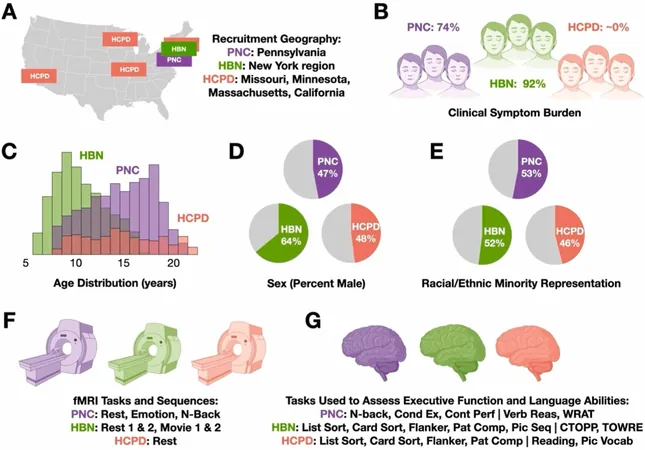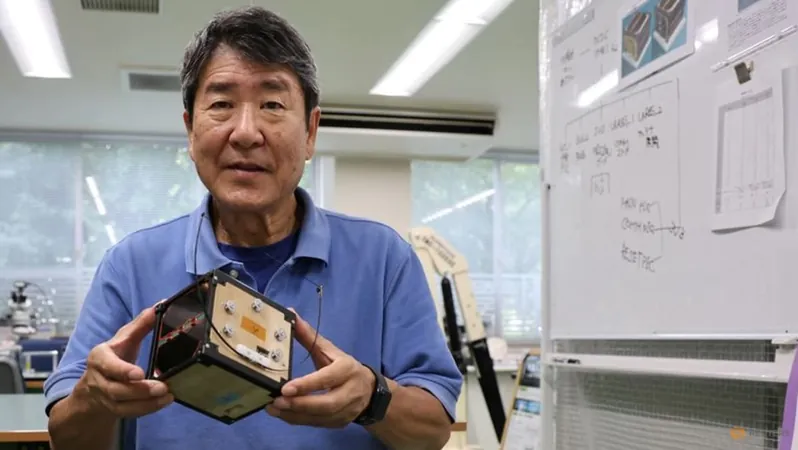
Breakthrough in UTI Prevention for Kids: How Cranberries and Nitrofurantoin Can Help!
2024-11-04
Author: Arjun
Introduction
A new meta-analysis has revealed promising options for children suffering from recurrent urinary tract infections (RUTIs). The study indicates that the antibiotic nitrofurantoin, alongside cranberry products, significantly reduces the frequency of symptomatic UTI episodes, a major relief for affected families.
Effectiveness of Nitrofurantoin
Analyzing data from 23 randomized controlled trials involving 3,335 children, researchers found nitrofurantoin to be the most effective preventive measure. Compared to controls, nitrofurantoin drastically lowered the odds of symptomatic UTI episodes (Odds Ratio [OR] 0.21), and also outperformed other antibiotics like trimethoprim and sulfamethoxazole (OR 0.29), as well as trimethoprim alone (OR 0.23).
Impact of Cranberry Products
But it’s not just antibiotics that are making waves! The study also highlighted that cranberry juice or tablet use resulted in a whopping 59% decrease in UTI episodes compared to controls (OR 0.41). This finding has sparked excitement in the medical community, as the drawbacks of extended antibiotic use—like antibiotic resistance—make non-antibiotic strategies particularly appealing.
Expert Commentary
In their commentary, experts Joshua Watson, MD, and Jason Newland, MD, MEd, emphasized the significance of these non-antibiotic options, noting the potential benefits for children at risk of recurrent UTIs. They pointed out that while low-dose antibiotics can inhibit the bacterial growth responsible for acute pyelonephritis and kidney scarring, long-term use isn't without risks. A recent Cochrane Systematic Review underlined that these antibiotics should only be used in cases where children are particularly vulnerable.
Risks of Kidney Scarring
It is crucial to note that while nitrofurantoin and cranberry products demonstrate effectiveness in reducing UTI symptoms, they do not eliminate the risk of kidney scarring, a serious consequence of recurrent infections. Children with febrile UTIs are at particular risk; data illustrates that incidence of kidney scarring rises dramatically with successive UTIs—from 2.8% after one febrile UTI to over 28% after multiple infections.
Other Interventions
The research also examined various interventions such as cephadroxil (Duricef), lactobacillus, vitamin D, and cefprozil (Cefzil), noting that though some had clinical significance in reducing UTIs, they did not achieve statistical significance. Nitrofurantoin stood out as the leading choice among all interventions tested.
Study Demographics and Duration
The participant ages in the studies ranged from 3.8 to 14.7 years, with over half the studies conducted in Europe and others distributed across Asia, the U.S., Argentina, and Australia. Conducted between 1975 and 2023, the studies varied in treatment duration from two months to three years, but many were flagged for high risk of bias.
Future Research Directions
This study calls for further research to determine the best formulations and dosages for cranberry products, as well as to identify the appropriate patient profiles who may benefit the most. This pathway to understanding could lead to more tailored and effective treatments.
Emerging Solutions
Meanwhile, there are other potential solutions on the horizon. Watson and Newland highlighted several antibiotic alternatives still in need of rigorous study in children—options like probiotics, methenamine, and D-mannose. Excitingly, ongoing research into vaccines for RUTI could eventually transform prevention strategies, leading to a future where recurrent UTIs in children are effectively managed or even eradicated.
Conclusion
Parents and caregivers should stay alert to emerging treatments while continuing to consult with healthcare professionals to tailor prevention and treatment strategies for their children. The combination of nitrofurantoin and cranberry products could mark a significant step forward in protecting young patients from the distress and complications linked to RUTIs!





 Brasil (PT)
Brasil (PT)
 Canada (EN)
Canada (EN)
 Chile (ES)
Chile (ES)
 España (ES)
España (ES)
 France (FR)
France (FR)
 Hong Kong (EN)
Hong Kong (EN)
 Italia (IT)
Italia (IT)
 日本 (JA)
日本 (JA)
 Magyarország (HU)
Magyarország (HU)
 Norge (NO)
Norge (NO)
 Polska (PL)
Polska (PL)
 Schweiz (DE)
Schweiz (DE)
 Singapore (EN)
Singapore (EN)
 Sverige (SV)
Sverige (SV)
 Suomi (FI)
Suomi (FI)
 Türkiye (TR)
Türkiye (TR)